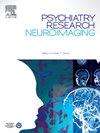The relationship between EEG theta/beta ratio and response inhibition in autogenous and reactive obsessions
IF 2.1
4区 医学
Q3 CLINICAL NEUROLOGY
引用次数: 0
Abstract
Obsessive-Compulsive Disorder (OCD) is a diverse mental health condition that leads to substantial impairment and currently has limited success in treatment outcomes. The aim of the current study was to examine the ratio of electroencephalographic (EEG) band power within the Autogenous-Reactive (AO-RO) taxonomy of OCD during inhibition to improve our understanding of the disorder. Inhibition was measured broadly using interference and action cancellation tasks while EEG data was recorded from 61 undergraduate students. EEG band power was computed from frontal-central electrodes Fz and Cz for theta and beta frequency bands. Event-related spectral perturbations (ERSPs) were used to measure EEG band power during inhibitory task performance to calculate the Theta/Beta ratio (TBR). The relationship between AO-RO severity and the TBR at each electrode was statistically analyzed using two hierarchical linear regressions. TBR at electrode Fz during the stop-signal task was the only significant EEG predictor of AO severity. TBR predictors were not significant for RO severity. These results suggest that AO is more strongly associated with a neural correlate of inefficient and excessive cognitive and attentional control than RO. Further research is required for determining the utility of TBR for characterizing the heterogeneity within OCD.
自发性和反应性强迫的脑电图θ / β比值与反应抑制的关系
强迫症(OCD)是一种多种多样的精神健康状况,它会导致严重的损害,目前在治疗结果方面取得的成功有限。本研究的目的是检查强迫症在抑制期间的自反应性(AO-RO)分类中的脑电图(EEG)频带功率比率,以提高我们对该疾病的理解。通过干扰和动作消除任务对61名大学生的脑电图数据进行了广泛的抑制测量。从额中央电极Fz和Cz计算θ和β频段的脑电频带功率。采用事件相关谱摄动(event - relevant spectral perturbations, ERSPs)测量抑制任务执行期间脑电频带功率,计算Theta/Beta比(TBR)。使用两个层次线性回归对各电极上AO-RO严重程度与TBR之间的关系进行统计分析。在停止信号任务期间,电极Fz的TBR是AO严重程度的唯一显著脑电预测因子。TBR预测因子对RO严重程度无显著影响。这些结果表明,与RO相比,AO与低效和过度的认知和注意力控制的神经关联更为密切。需要进一步的研究来确定TBR在表征强迫症异质性方面的效用。
本文章由计算机程序翻译,如有差异,请以英文原文为准。
求助全文
约1分钟内获得全文
求助全文
来源期刊
CiteScore
3.80
自引率
0.00%
发文量
86
审稿时长
22.5 weeks
期刊介绍:
The Neuroimaging section of Psychiatry Research publishes manuscripts on positron emission tomography, magnetic resonance imaging, computerized electroencephalographic topography, regional cerebral blood flow, computed tomography, magnetoencephalography, autoradiography, post-mortem regional analyses, and other imaging techniques. Reports concerning results in psychiatric disorders, dementias, and the effects of behaviorial tasks and pharmacological treatments are featured. We also invite manuscripts on the methods of obtaining images and computer processing of the images themselves. Selected case reports are also published.

 求助内容:
求助内容: 应助结果提醒方式:
应助结果提醒方式:


